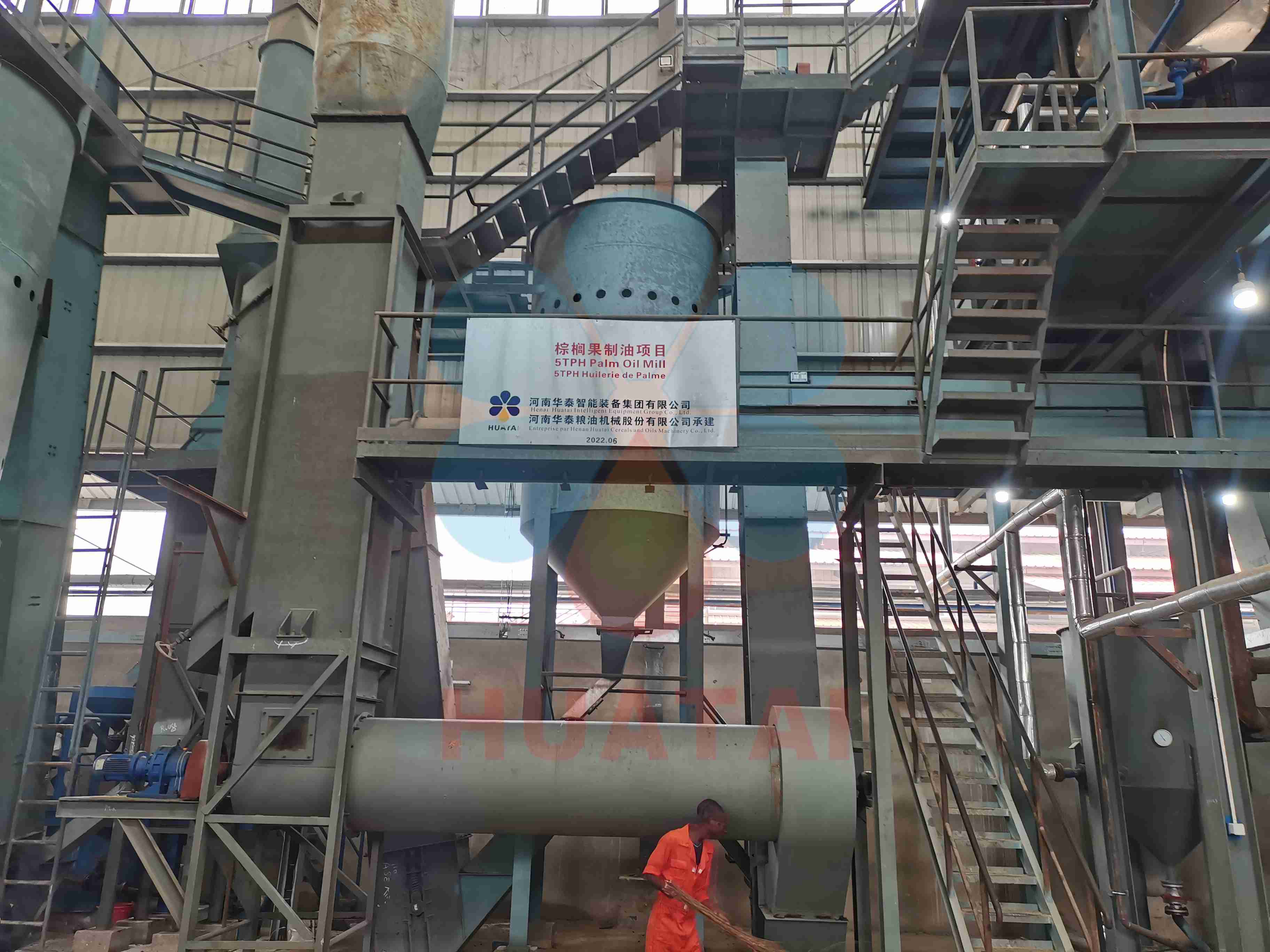Fresh fruit bunches (FFB) are placed in a sterilizer where steam is injected for high-temperature, short-time fermentation and sterilization. The steam heats all the fruits, reducing bacterial and enzyme activity, preventing the increase of free fatty acids (FFA), and improving crude oil quality.
The sterilized FFB are sent to a drum separator, which separates the empty fruit bunches from the fresh palm fruits. The empty fruit bunches are crushed and returned to the plantation as fertilizer.
The palm fruits are conditioned and crushed using specialized equipment, then sent to a twin-screw oil press to extract the oil. The liquid part containing sludge, water, and oil is sent to a purifier to separate the crude palm oil.
The solid part from the oil press is conveyed to a dynamic vertical separation column, where wind power separates the fiber from the palm kernels.
The separated fiber is sent to the boiler as fuel.
The polished kernels are transported to a storage container, where they are crushed, and the kernels are separated.
The crude palm oil, which mainly contains solid sediments, water, and oil, is separated using a vibrating rotary screen. The heated crude palm oil is pumped into a vacuum dryer to remove water and then stored in a crude oil tank. The sludge is treated and discharged into the sewage treatment channel, and the solid matter is used for field fertilization and steam production.
The steam boiler provides steam for power generation, fermentation, sterilization, and heating. The fuel used in the steam boiler is the fiber and shells separated during the palm oil production process.

The role of palm oil refining equipment is to remove the impurities in edible oil, palm oil refining equipment is not to remove all the impurities, but to selectively remove the impurities in the palm crude oil, to maintain the biological properties of the oil and fat, and to retain or extract useful substances.
Hot water or phosphoric acid is added to the crude palm oil to coagulate the gum-soluble impurities, which are then separated from the palm oil.
Small-scale refineries typically use chemical deacidification, where an alkaline solution is added to neutralize the free fatty acids in the oil. This process produces soapstock. Large-scale refineries generally use physical deacidification, where high-temperature steam is used in a deodorizer to remove free fatty acids, producing by-product fatty acids.
In the bleaching stage, bleaching earth is added to the palm oil to absorb pigments, which are then removed using a filter leaf machine.
The deodorization process requires a temperature of about 260°C. The deodorization tank or tower needs excellent vacuum treatment to prevent palm oil oxidation. High-temperature steam is then passed through the palm oil to remove odors, completing the refining process.

Huatai Group specializes in providing a complete set of palm oil processing equipment , covering the whole process from raw material pretreatment to refined oil storage and packaging. The production line is highly efficient and stable, energy-saving and environmentally friendly, easy to operate, and provides personalized customized services to ensure customer satisfaction and help customers achieve more efficient, environmentally friendly and economical production goals.
Huatai Oil Machinery provides good quality oil mill plant, time & fast delivery, perfect after-sale services, and reasonable price, contact us!
Website: https://www.huataioilmachine.com/Copyright @ Henan Huatai Cereals And Oils Machinery Co.,Ltd.